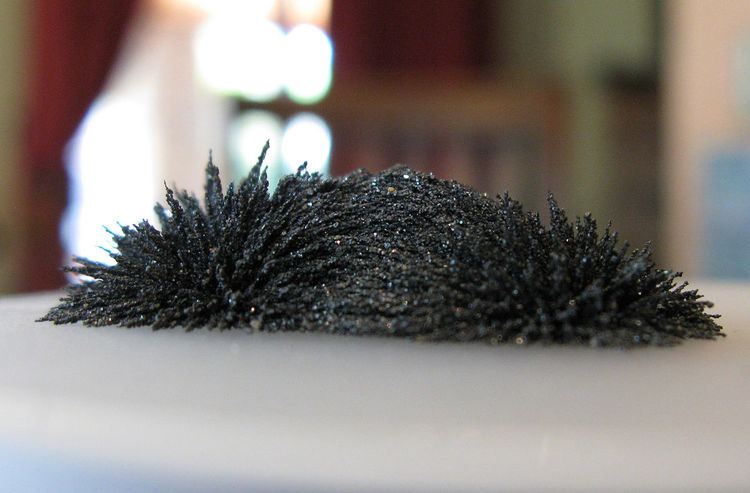 | ||
Ironsand also known as iron-sand and iron sand is a type of sand with heavy concentrations of iron. It is typically dark grey or blackish in colour.
Contents
It comprises mainly magnetite, Fe3O4, and also contains small amounts of titanium, silica, manganese, calcium and vanadium.
Ironsand has a tendency to heat up in direct sunlight, causing temperatures high enough to cause minor burns. As such it forms a hazard in New Zealand at popular west-coast surf beaches like Piha.
Occurrence
Although it is found internationally, this occurs extensively on the west coast of New Zealand's North Island.
It is mined and used by New Zealand Steel to create steel, in a unique manufacturing process. A proposal by Iron Ore NZ Ltd. for further ironsand mining off the coast of Taranaki faced resistance from some Māori and others in 2005 in the wake of the New Zealand foreshore and seabed controversy. Ironsand was also used extensively in Japan for iron production, especially for traditional Japanese swords.
In Indonesia, iron sand is prevalent on the south coast of Java island.
History
According to the OED online entry for sand-iron, Jedidiah Morse (1761–1826), writing in The American universal geography (new edition, 1796 (2 vols)), stated that Jared Eliot (1685-1763) invented sand-iron, or the making of iron from black sand, in 1761. However, Japanese craftsmen have been using sand-iron, known as "tamahagane", in sword-making for at least 2000 years. The crafting of sand-iron in "tatara" smelters, made of brick and clay, is still practiced by Japanese craftsmen today.
